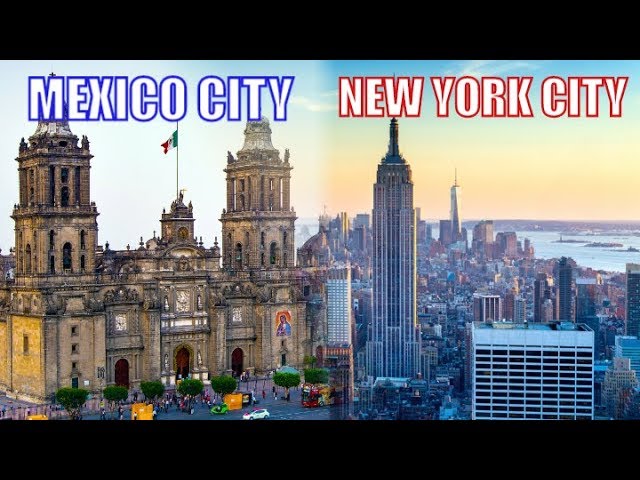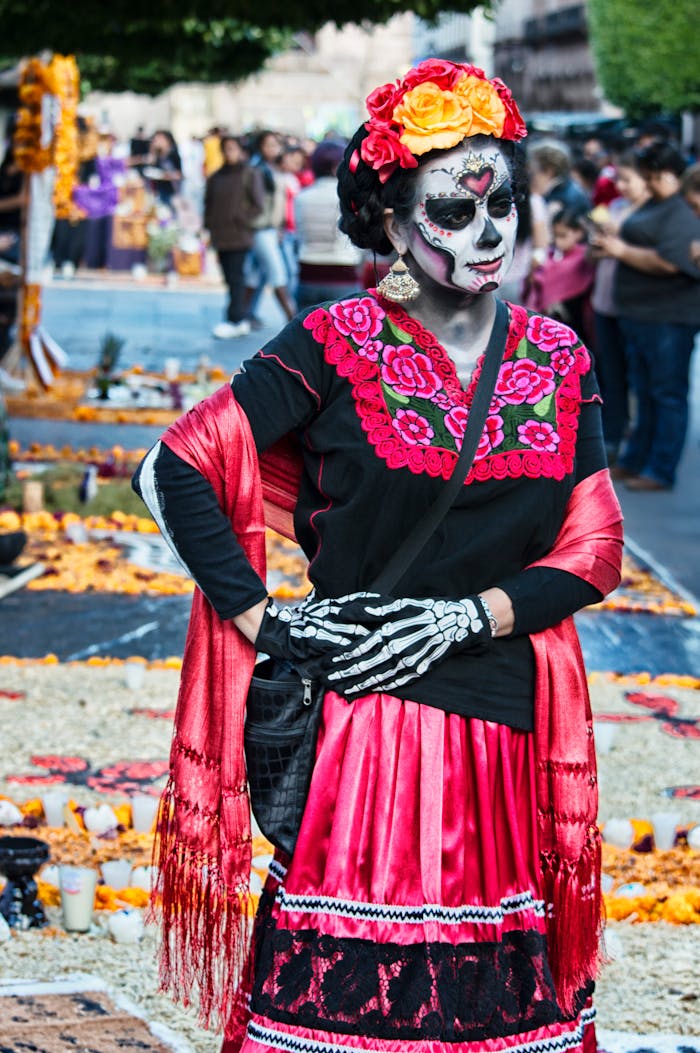Exploring the Population Dynamics: Mexico City VS NYC
When embarking on a journey to explore the vibrant cultures and scenes of urban landscapes, the populous cities of Mexico City and New York City (NYC) stand out as fascinating studies. Both cities boast remarkable population densities, showcasing a bustling life that features a meld of tradition and modernity. However, the dynamics of their populations paint a distinct picture of urban living in Mexico and the United States.
Mexico City, as the heart of Mexico, is not only the country’s capital but also its most populous city. With a population exceeding 21 million people in its metropolitan area, it ranks as one of the largest urban centers globally. The city is renowned for its rich cultural heritage, bustling streets, and diverse communities that contribute to a unique societal tapestry. The demographic distribution in Mexico City reveals a predominantly young population, with a significant portion engaged in the service sector, driving the city’s economic engine.
On the other hand, New York City, often hailed as the “city that never sleeps,” holds a population of about 8.4 million within its boundaries. Despite its smaller size compared to Mexico City, NYC’s density is unparalleled in the United States, creating a dynamic urban environment. The city’s population is characterized by its immense cultural diversity, thanks to centuries of immigration. This has led to a vibrant mosaic of ethnic neighborhoods, languages, and cultures, contributing to New York’s global cultural influence.
The comparison between Mexico City and NYC’s population dynamics offers insights into how each city’s unique characteristics shape the experiences of locals and visitors alike. Mexico City’s youth-driven energy contrasts with New York’s melting pot of cultures, each creating distinct rhythms of city life. While both cities are characterized by their vast populations and diversity, the factors driving their growth and the challenges they face are deeply influenced by their historical, economic, and social contexts.
A Tale of Two Cities: Urban Adventures in Mexico City and NYC
Embarking on urban adventures in two of the world’s most vibrant cities, Mexico City and New York City (NYC), presents an unparalleled exploration of culture, history, and exhilaration. Both cities, rich in their unique ways, offer a canvas for the adventure seeker and cultural enthusiast alike. Mexico City, with its ancient Aztec ruins juxtaposed against modern architecture, and NYC, a melting pot of global cultures and iconic landmarks, extend an invitation to explore their urban landscapes through distinct lenses.
In Mexico City, the journey begins in the heart of the city at the Zócalo, one of the largest city squares in the world, surrounded by historic buildings and the majestic Metropolitan Cathedral. A short trip away, the ancient ruins of Teotihuacan invite adventurers to climb the Pyramid of the Sun and the Pyramid of the Moon, offering a glimpse into the city’s past civilizations. Meanwhile, the bustling markets, like La Ciudadela, offer a colorful array of crafts and cuisines that showcase the vibrancy of contemporary Mexican culture. In contrast, the leafy avenues and art deco architecture of the Condesa and Roma neighborhoods provide a serene escape with their chic cafes and galleries.
Venturing to NYC, the adventure takes a different turn. The city that never sleeps pulsates with energy, from the neon lights of Times Square to the verdant paths of Central Park. Here, adventurers can ascend the Empire State Building for breathtaking views, delve into the diverse neighborhoods such as Chinatown and Little Italy, or explore the vast collections of the Metropolitan Museum of Art and the Museum of Modern Art. NYC’s food scene, a testament to its multicultural heritage, offers everything from bagels and pizza to gourmet dining experiences. The High Line, an elevated park built on a historic freight rail line, presents a unique urban stroll, offering views of the city and the Hudson River amidst beautifully landscaped gardens.
Both Mexico City and NYC offer adventures that are as varied as they are memorable, embodying the essence of urban exploration. Mexico City’s blend of ancient history and contemporary culture contrasts with NYC’s dynamic urban landscape and cultural diversity, providing endless opportunities for discovery. Each city possesses its own rhythm, character, and set of unforgettable experiences, inviting adventurers to dive into their urban tales.
Population Insights: How Mexico City’s Density Compares to NYC
When looking at urban density as a measure of how populated city areas are, Mexico City and New York City stand out as two of the most iconic examples. Both cities are renowned not just for their tall buildings and bustling streets, but also for the sheer number of people living within their confines. Mexico City, the capital of Mexico, is often thought to be one of the most densely populated cities in the world. However, when compared directly with New York City (specifically, Manhattan), the picture of urban density takes on a different hue. This insight explores the juxtaposition of population density between these two vibrant urban centers.
In terms of raw numbers, Mexico City’s metropolitan area is vast, housing approximately 21 million people over an extensive area. When we drill down into the specifics of density, Mexico City’s core has about 6,000 people per square kilometer, which is reflective of its broader metropolitan sprawl. On the other hand, New York City, particularly Manhattan, notably denser, with over 27,000 people per square kilometer. This stark contrast highlights not just the differences in how people live in these cities, but also the urban planning and infrastructure paradigms that underpin each city. Despite Mexico City’s vast population, its density is dispersed over a larger area compared to the concentrated density found in Manhattan.
This comparative analysis does not just shed light on the physicality of urban living but also on the cultural nuances of city life in Mexico City and New York City. The higher density of NYC, especially Manhattan, often translates to a very distinct urban lifestyle, with reliance on public transportation and walking as primary modes of movement, contrasting with the more spread out areas of Mexico City where car travel is more common. Each city’s density has profound implications on everything from the environment to social interactions, thereby coloring the experience of urban living in unique ways. The insights into the density comparison between Mexico City and NYC reveal much more than numbers; they uncover the rhythm and pulse of two of the world’s most fascinating urban landscapes.
From Aztec to Big Apple: Understanding Mexico City and NYC’s Growth
Mexico City and New York City (NYC) have both evolved from their historic roots into bustling metropolises, known globally for their unique cultures, economic significance, and skyscraper-filled horizons. This growth trajectory, however, showcases distinct paths influenced by historical, cultural, and social developments unique to each city.
Mexico City’s origins are deeply rooted in Aztec civilization, established in 1325 as Tenochtitlán. This ancient city, known for its intricate canal systems, majestic temples, and bustling markets, laid the foundation for what would become the modern Mexican capital. The Spanish conquest in 1521 marked a pivotal transformation, integrating European architectural and societal structures. Today, Mexico City stands as a testament to a blend of indigenous and Spanish influences, evident in its cuisine, art, and urban design.
On the other hand, New York City’s growth trajectory began as a small trading post established by Dutch settlers in 1624, originally named New Amsterdam. Its strategic location on the East Coast of the United States made it a crucial hub for commerce and immigration, facilitating its growth into an economic powerhouse. Throughout the centuries, NYC has become a melting pot of cultures, which has significantly influenced its development, skyline, and status as a global landmark.
Economic Evolution: Both cities have witnessed remarkable economic transformations. Mexico City developed into the financial, political, and cultural hub of Mexico, housing the country’s major corporations, government agencies, and a thriving arts scene. Similarly, NYC emerged as an international financial center, home to Wall Street and a vast array of multinational corporations. This economic prowess has attracted talents from across the globe, further fostering both cities’ growth.
Cultural Impact: The cultural dynamics of Mexico City and NYC are unparalleled. Mexico City boasts an extensive array of museums, historical sites, and theaters that reflect its rich Aztec heritage and Spanish colonial past. NYC, known as the “Big Apple,” offers a broad spectrum of cultural institutions, from the Metropolitan Museum of Art to Broadway theaters, showcasing a blend of traditional and contemporary artistic expressions. Both cities draw millions of tourists annually, eager to experience their vibrant cultures and historical depth.
Mexico City and NYC: A Comparative Adventure Through Urban Populations
Embarking on an urban adventure through the contrasting landscapes of Mexico City and New York City offers a unique glimpse into the heart of two of the world’s most vibrant and bustling metropolises. Both cities are renowned for their dynamic urban environments, but they offer distinct experiences shaped by their unique cultures, histories, and populations. This exploration will not only highlight the similarities and differences between these urban giants but also immerse travelers in the essence of what makes each city truly unique.
Mexico City, with its rich tapestry of history and culture, presents an urban adventure like no other. As the capital and largest city of Mexico, it is home to over 21 million people, making it one of the most populous cities in the Western Hemisphere. This vast population is spread across a sprawling metropolitan area, where ancient ruins coexist with modern skyscrapers. The city offers a cornucopia of experiences, from the architectural marvels of the Templo Mayor and the grandeur of the Palacio de Bellas Artes to the bustling energy of its street markets and the tranquil beauty of its floating gardens in Xochimilco. The sheer diversity of Mexico City’s neighborhoods, each with its own unique character and charm, provides a rich urban tapestry for adventurers to explore.
New York City, on the other hand, is often dubbed “The City That Never Sleeps,” and for good reason. Its population of over 8 million people is packed into five distinct boroughs, each offering its own adventures and sights. Manhattan, with its iconic skyline, bustling streets, and landmarks like Central Park, Times Square, and the Statue of Liberty, epitomizes the urban experience. However, venturing into boroughs like Brooklyn and Queens reveals a different side of NYC, one that is vibrant with diverse cultures, cuisines, and artistic expressions. The cultural mosaic of NYC’s neighborhoods offers a complex but captivating urban adventure, showcasing the city’s status as a melting pot of global cultures.
The juxtaposition of Mexico City’s historical richness with NYC’s modern vibrancy provides a unique framework for understanding urban populations. Both cities are pulsating with life, offering endless opportunities for cultural immersion, exploration, and adventure. From the ancient Aztec ruins in Mexico City’s heart to the towering skyscrapers of Manhattan, travelers can weave through the fabric of time and culture. Despite their differences, both cities exemplify the beauty of urban diversity, where history and modernity collide and coexist, creating endlessly fascinating urban landscapes for adventurers to explore.


